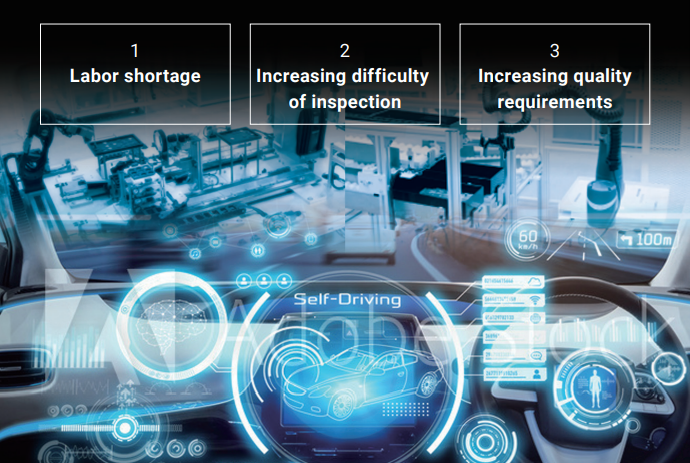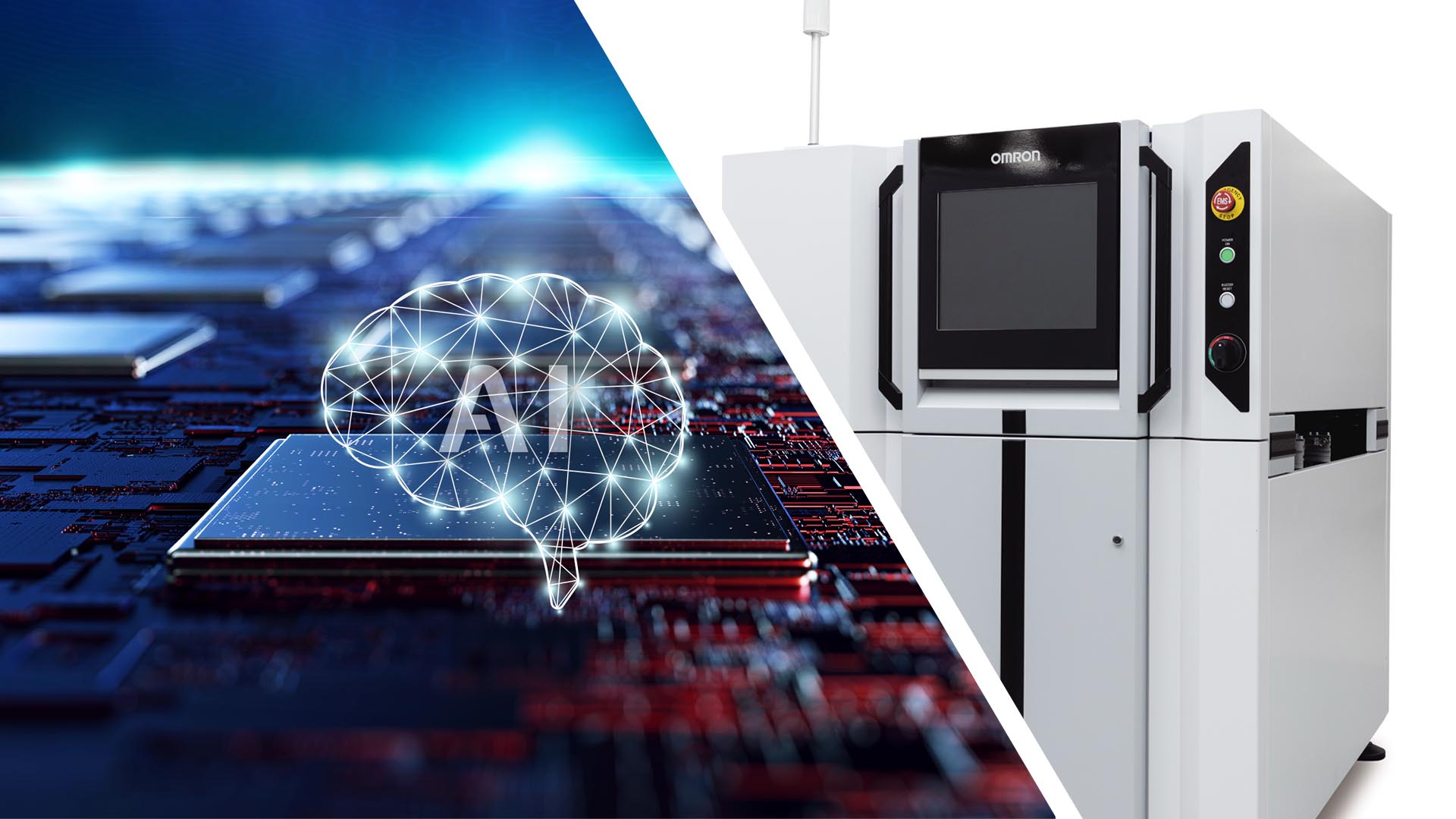OMRON today announces the global launch of its new PCB inspection system VT-S10 Series, featuring an industry-first imaging technology and AI to automate high-precision inspection processes for PCB sub-assemblies, thus eliminating the need for specialist operator skills. With an increased call for the new global wireless standard 5G, electric vehicles (EVs), and autonomous driving, the inspection of in-vehicle PCB assemblies becomes increasingly challenging. OMRON’s new VT-S10 solution allows for high-precision inspection of such key components to maintain and enhance quality, thus contributing to security and safety.
In recent years, the demand for PCB assemblies for 5G, EVs, and autonomous driving has grown rapidly, also raising the quality requirements of PCBs, since these applications can turn out to be a risk for humans. As PCB assemblies become more dense and even smaller, inspection is accompanied by increased challenges. Conventional PCB inspection systems struggle to take accurate images of solder shapes, for example, thus limiting the scope and parameters of inspection. Meanwhile on the factory floor and confronted with a growing shortage of skilled workforce, employees are required to avoid close contact and movement to prevent the spread of COVID-19. As a result, the frequency of visual inspections has to be reduced. Other demands are lower experience and skill requirements for the implementation of new inspection equipment, in addition to improved inspection accuracy. Where the Automotive and 5G market will became bigger the product supply chain will be expanded. So, our shape inspection such as IPC standard became more useful to maintain the inspection quality.

Equipped with OMRON’s proprietary MDMC (Multi-Direction Multi-Color) imaging technology, the VT-S10 Series automatically optimizes irradiation angles, colours, and light intensity of illumination during the inspection of the PCB assembly taking characteristics such as the shapes of electronic components and soldering on the PCB into account. First tests show that this new technology can reduce the human-hours required for set up by approximately 70%. Furthermore, with the assistance of AI, this PCB inspection system can automate inspections that have until now had to rely on human senses, significantly improving inspection accuracy. OMRON has more than 30 years of experience in the field of both appearance and solder inspection.
OMRON has developed a manufacturing innovation concept, called “innovative-Automation” With this concept, OMRON is committed to bringing innovation to manufacturing sites through three key innovations, or three “i’s.”: OMRON’s solutions are “integrated (evolution in control),” “intelligent (intelligence developed through ‘information and communications technology’),” and “interactive (new harmonization between humans and machines),” OMRON is driving innovations on the production floor. Through the integration of the widest range of control devices and the use of AI fully versed in solder inspection, the VT-S10 Series is the latest OMRON offering that embodies the “innovative-Automation” concept. Going forward, the company wants to continue to evolve production floors hand in hand with customers. By expanding the scope and parameters for automated inspection, operators shall be freed from simple, monotonous work so that they can engage in more creative work, ultimately improving the security and safety of our society.
AI-Powered PCB Inspection System VT-S10 Series

Key Features VT-S10 Series:
- MDMC imaging technology significantly lowers chances of erroneous decisions
By utilizing its proprietary MDMC illumination, OMRON has developed an imaging technology for high-precision inspection of ever-advancing substrates and components. Through the flexible manipulation of irradiation angles, colours, and light intensity, it’s now possible to capture solder shapes more accurately than with conventional imaging methods, eliminating the interference of shadows of neighbouring tall components, and distinctly reading patterns on substrates and prints on the surface of components.
- Minimizing programming human-hours by quantitative inspection and AI-assisted qualitative inspection
Based on the knowledge that OMRON has accumulated in both component and solder shape inspection, as well as images gained through MDMC illumination, OMRON has developed AI dedicated to solder inspection. This AI-assisted inspection is combined with quantitative inspection by MDMC to achieve reductions in both the required level of teaching skills and the chances of erroneous decisions. In a validation test with a customer, OMRON verified a reduction in visual inspection human-hours by 85%.
Accurately Capturing Solder Shapes in 3D

3D imaging from all angles for accurate inspection of complicated solder shapes
3. M2M system for production of defect-free products
Linking data with production equipment at other manufacturers utilising Omron’s proprietary QupAuto process software, allows for improved monitoring quality, minimizing defects. This new series can improve visualizing quality by developing a database of inspection results, including numerical values and images, from each process. Additionally, the VT-S10 technology enhances the first pass yield rate by automatically optimizing post-print/post-placement inspection criteria based on the inspection results at the final process. It can also link data with other production equipment manufacturers to reduce and prevent defects. A validation test with a customer showed that, with the introduction of this M2M system, the defect ratio was reduced by more than 50% by detecting and dealing with quality variations before defects occurred.

For more information, please contact, AOI_Info@omron.com









